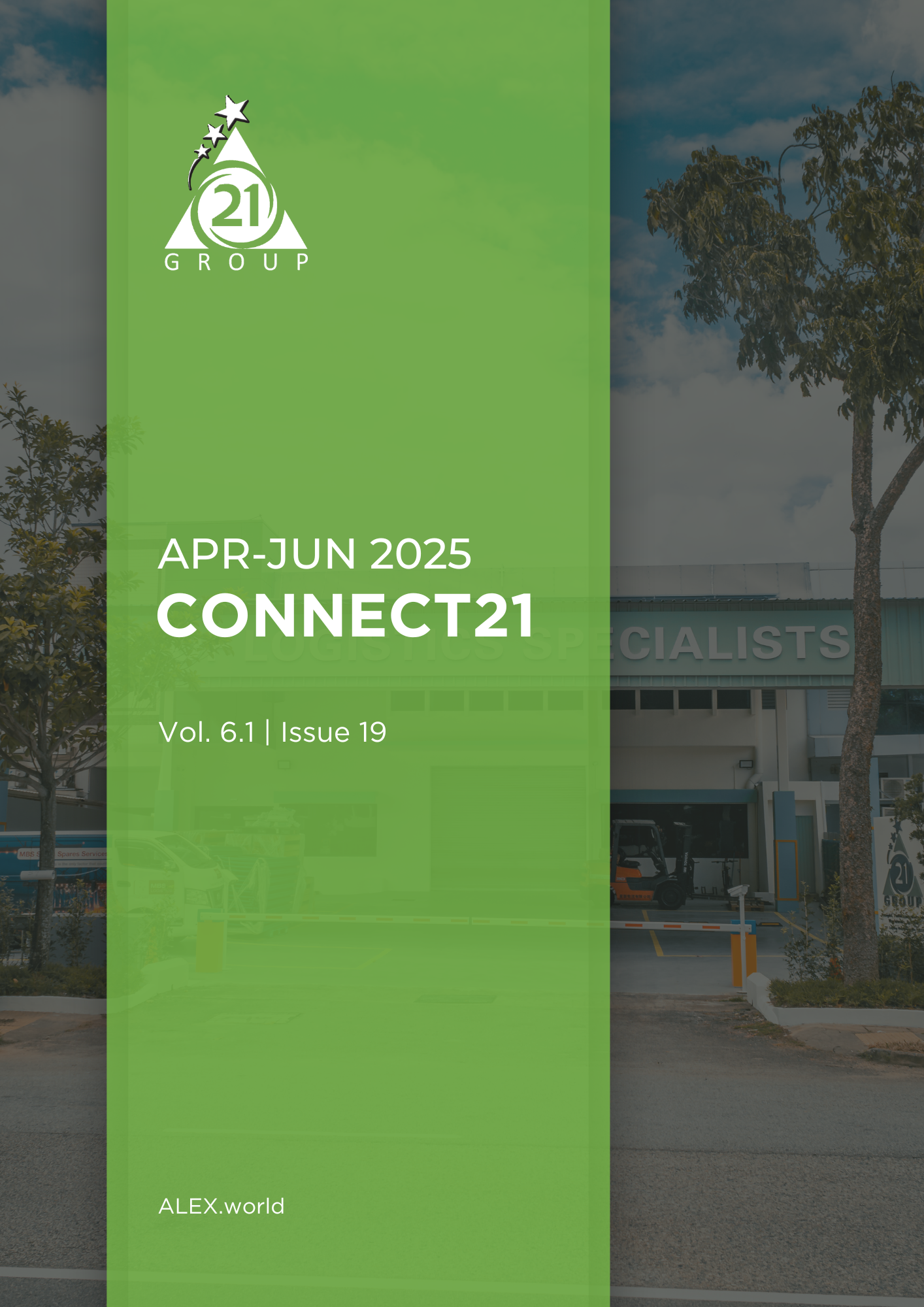How to Choose the Right Sea Freight Solution for Urgent and Large-Scale Shipments
20 January 2025 | 03:59 PM

Choosing the right sea freight forwarding services can make or break the efficiency of your logistics operations, especially for urgent and large-scale shipments. Businesses often face the challenge of balancing the need for speed with the capacity to handle bulk goods, all while managing costs and timelines.
By understanding the key factors that influence sea freight solutions—like transit times, carrier reliability, and shipment requirements—you can streamline your shipping process and meet your business needs effectively.
Key Factors in Choosing the Right Sea Freight Solution
When it’s time to choose the right sea freight service for your shipment, several key factors come into play:
Transit Time
For urgent shipments, striking the right balance between speed and efficiency is crucial. While expediency is the top priority, it cannot come at the expense of compromised operations or excessive costs. Transit times play a pivotal role in meeting delivery schedules and ensuring customer satisfaction. Delays can lead to missed deadlines, production bottlenecks, and disgruntled clients. Conversely, efficient transit times enable businesses to uphold commitments, maintain a reliable supply chain, and foster positive customer experiences.
When it comes to large-scale shipments, optimising transit times becomes even more critical. Factors like vessel schedules, port congestion, and container availability can significantly impact delivery timelines. Effective strategies may include:
- Consolidating shipments to maximise container utilisation and reduce handling times.
- Collaborating with logistics partners to secure priority loading and unloading.
- Leveraging advanced tracking and monitoring systems for visibility and proactive adjustments.
- Implementing contingency plans for potential disruptions or delays.
Capacity and Volume Considerations
Choosing an ocean freight provider with the right capacity is critical for large shipments to ensure efficient handling and timely delivery. Inadequate capacity can lead to delays, bottlenecks, and potential damages, ultimately compromising the entire supply chain.
To assess a shipping provider’s ability to handle your shipment volume, consider factors such as their fleet size, container availability, and port infrastructure. Review their track record in managing large-scale shipments similar to yours, and inquire about their contingency plans for unexpected surges or disruptions.
When it comes to consolidating smaller shipments, businesses have two main options: Less than Container Load (LCL) and Full Container Load (FCL). LCL involves sharing a container with other shipments, potentially reducing costs but increasing handling times. FCL, on the other hand, dedicates an entire container to your shipment, offering greater control and security but at a higher cost. The choice between LCL and FCL depends on factors like shipment size, urgency, and cost considerations.
Cost vs. Efficiency
Understanding the trade-off between speed and cost in sea freight is crucial for businesses seeking efficient and cost-effective shipping solutions. Faster transit times often come at a premium price, while slower options may be more economical but potentially impact customer satisfaction and supply chain efficiency.
To assess the total cost of a shipment, businesses must consider various factors beyond the base freight rate. Fuel surcharges, port charges, and insurance premiums can significantly impact the overall expense. Monitoring fluctuations in fuel prices and accounting for additional fees at origin and destination ports is essential for accurate cost projections. Insurance coverage should also be evaluated based on the shipment’s value, mode of transport, and potential risks.
When negotiating freight rates for large shipments, leveraging volume discounts and establishing long-term partnerships with reputable carriers can yield favourable terms. Consolidating shipments, optimising container utilisation, and exploring intermodal transportation options can also help reduce costs. Businesses should be prepared to provide detailed shipment information, historical data, and forecasts to support their negotiations.
Reliability and Track Record
Evaluating the reliability of a sea freight provider in Singapore is crucial for ensuring timely and secure shipment. Here are some key factors to consider:
Reputation and Track Record: Research the provider’s reputation in the market by reading reviews, seeking recommendations from industry peers, and examining their performance history. Established providers with a proven track record of on-time deliveries and customer satisfaction are generally more reliable.
On-Time Delivery: On-time delivery is paramount in the sea freight industry, as delays can disrupt supply chains and incur additional costs. Assess the provider’s on-time delivery rates, transit time consistency, and ability to meet promised deadlines.
Contingency Planning: Reliable providers should have robust contingency plans in place to mitigate potential disruptions, such as port congestion, weather events, or equipment failures. Inquire about their risk management strategies and backup plans.
Financial Stability: A provider’s financial stability is a good indicator of their ability to sustain operations and fulfil their commitments. Review their financial reports, credit ratings, and industry reputation to gauge their long-term viability.
Red Flags:
- Frequent complaints about delayed shipments or mishandled cargo
- Lack of transparency or poor communication
- Limited insurance coverage or inadequate liability policies
- Outdated equipment or insufficient infrastructure
- Inexperienced staff or high employee turnover
In Singapore, reputable industry associations like the Singapore Logistics Association (SLA) and the Singapore Maritime Foundation (SMF) can provide valuable insights into the reliability and performance of sea freight providers. Consulting with industry experts, attending trade events, and maintaining open communication with potential providers can help you make an informed decision.
Role of Digital Tools in Simplifying Sea Freight
The right digital tools can streamline the sea freight process, improve efficiency, and provide greater visibility throughout the supply chain. Here are some key benefits of leveraging digital solutions:
Freight Tracking Solutions
Digital tracking tools provides numerous benefits for businesses and customers alike. For businesses, it enables better supply chain management, improved inventory planning, and enhanced customer service. By having visibility into the location and status of shipments, businesses can proactively address potential delays, adjust production schedules, and keep customers informed.
For customers, shipment visibility offers peace of mind and transparency. They can track their orders from origin to destination, receiving updates on estimated arrival times and any potential disruptions. This level of transparency fosters trust and strengthens relationships between businesses and their customers.
With data on shipment locations, businesses can quickly identify potential bottlenecks or disruptions and take proactive measures to address them. Advanced analytics and predictive capabilities within these tools can also help anticipate potential delays based on historical data and current conditions, allowing for proactive contingency planning.
Streamlining Cross-Border Logistics
Digital platforms streamline the paperwork and documentation process for international shipments by enabling electronic data exchange and automated document generation. These platforms integrate with various stakeholders, such as customs authorities, logistics providers, and regulatory bodies, allowing for seamless data sharing and reducing the need for manual data entry.
By digitising and automating the documentation process, digital platforms minimise the risk of human errors, which can lead to costly delays or compliance issues. Electronic data submission ensures accuracy and consistency, reducing the likelihood of mistakes that could arise from manual data entry or transcription errors.
Moreover, digital platforms facilitate the rapid processing of customs declarations and other required documentation, significantly reducing the time required for customs clearance. Automated document validation and compliance checks help identify and resolve potential issues proactively, further expediting the clearance process. This streamlined approach enables faster cargo release, minimising dwell times and enhancing overall supply chain efficiency.
How to Choose the Best Sea Freight Carrier
For large-scale shipments, it’s crucial to consider carriers with ample capacity and resources to handle the volume efficiently. Factors like the size of their fleet, network coverage, and handling capabilities should be evaluated. Urgent shipments, on the other hand, require carriers with reliable transit times, expedited services, and robust tracking capabilities to ensure timely delivery.
When comparing sea freight carriers, it’s essential to evaluate their service offerings, pricing structures, and performance metrics. Some carriers may excel in specific trade lanes or specialised cargo handling, while others may offer more competitive rates or value-added services. Analysing their strengths and weaknesses can help identify the best fit for your specific needs.
Key Questions to Ask When Evaluating Sea Freight Carriers
- What is their network coverage and schedule reliability for your desired routes?
- Do they offer specialised services for your cargo type (e.g., temperature-controlled, hazardous materials)?
- How do their rates compare to industry standards, and what value-added services are included?
- What are their transit times and on-time delivery performance metrics?
- What technology and digital tools do they provide for shipment visibility and tracking?
- How responsive and knowledgeable is their customer support team?
- What is their reputation for handling claims and resolving issues efficiently?
- Do they have certifications or accreditations relevant to your industry or cargo requirements?
Conclusion
Selecting the right sea freight solution is crucial for businesses to ensure efficient and cost-effective transportation of their goods. With the vast array of carriers and service offerings available, it’s essential to carefully evaluate your specific needs, such as shipment volumes, cargo types, and time sensitivity.
We encourage readers to conduct a thorough assessment of their requirements and compare various sea freight providers based on factors like network coverage, transit times, specialised services, pricing, and digital capabilities. Leveraging advanced freight tracking and management tools can significantly streamline operations, enhance visibility, and optimise supply chain performance.
To ensure you make the best choice for your business, we invite you to reach out to our team of sea freight experts. We offer personalised consultations and guidance, helping you navigate the complexities of sea freight and select the most suitable provider for your unique requirements.
Ready to streamline your urgent and large-scale shipments? Contact Alliance 21 today to discover the perfect sea freight solution tailored to your business needs!


